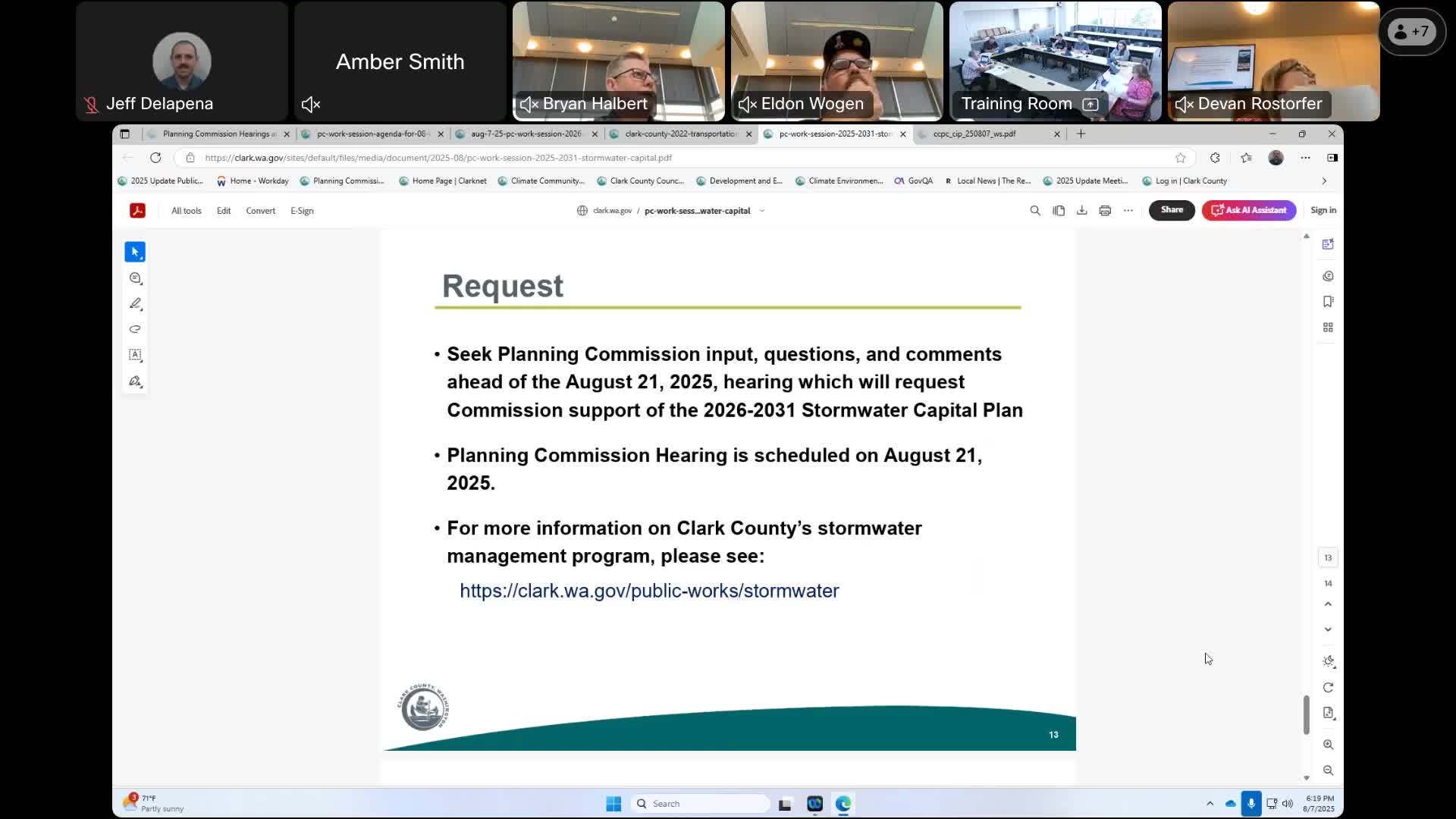Clark County Plans Significant Reforestation Investment Following Urban Tree Canopy Assessment
August 11, 2025 | Clark County, Washington
This article was created by AI summarizing key points discussed. AI makes mistakes, so for full details and context, please refer to the video of the full meeting. Please report any errors so we can fix them. Report an error »

Clark County is taking significant steps to enhance its environmental initiatives, particularly in reforestation and stormwater management, as discussed in the recent Planning Commission Work Session held on August 7, 2025. The meeting highlighted the county's commitment to improving its urban tree canopy and addressing water quality issues, which are crucial for combating climate change and preserving local ecosystems.
A key focus of the session was the county's reforestation budget, which currently stands at $900,000. Officials are working to determine how many acres this funding could potentially reforest. The county has recently completed its first urban tree canopy assessment, providing a baseline for current tree coverage and identifying changes since 2011. This assessment is vital as the county is required to establish goals for enhancing tree canopy by 2028 under its stormwater permit. There is a strong push within the county to increase the reforestation budget, with discussions underway to align these efforts with broader climate policies.
In addition to reforestation, the meeting addressed stormwater management strategies, particularly concerning water quality. The county is implementing new measures to combat algae blooms in local water bodies, which are often exacerbated by nitrogen runoff. A commitment was made to switch to advanced filtration systems that enhance phosphorus removal from stormwater. Furthermore, the county is in the process of hiring a dedicated lakes and watershed coordinator to focus on nutrient loading issues in local lakes.
The discussion also touched on the potential for wetland mitigation banking, which could provide future financial benefits for the county. While the current wetland restoration project does not include a banking component, there are plans to explore this option in the coming years.
Overall, the meeting underscored Clark County's proactive approach to environmental stewardship, with plans for increased reforestation and improved stormwater management that aim to enhance the quality of life for residents and protect local ecosystems. As these initiatives move forward, the county anticipates further discussions and policy developments that will shape its environmental landscape in the years to come.
A key focus of the session was the county's reforestation budget, which currently stands at $900,000. Officials are working to determine how many acres this funding could potentially reforest. The county has recently completed its first urban tree canopy assessment, providing a baseline for current tree coverage and identifying changes since 2011. This assessment is vital as the county is required to establish goals for enhancing tree canopy by 2028 under its stormwater permit. There is a strong push within the county to increase the reforestation budget, with discussions underway to align these efforts with broader climate policies.
In addition to reforestation, the meeting addressed stormwater management strategies, particularly concerning water quality. The county is implementing new measures to combat algae blooms in local water bodies, which are often exacerbated by nitrogen runoff. A commitment was made to switch to advanced filtration systems that enhance phosphorus removal from stormwater. Furthermore, the county is in the process of hiring a dedicated lakes and watershed coordinator to focus on nutrient loading issues in local lakes.
The discussion also touched on the potential for wetland mitigation banking, which could provide future financial benefits for the county. While the current wetland restoration project does not include a banking component, there are plans to explore this option in the coming years.
Overall, the meeting underscored Clark County's proactive approach to environmental stewardship, with plans for increased reforestation and improved stormwater management that aim to enhance the quality of life for residents and protect local ecosystems. As these initiatives move forward, the county anticipates further discussions and policy developments that will shape its environmental landscape in the years to come.
View full meeting
This article is based on a recent meeting—watch the full video and explore the complete transcript for deeper insights into the discussion.
View full meeting
